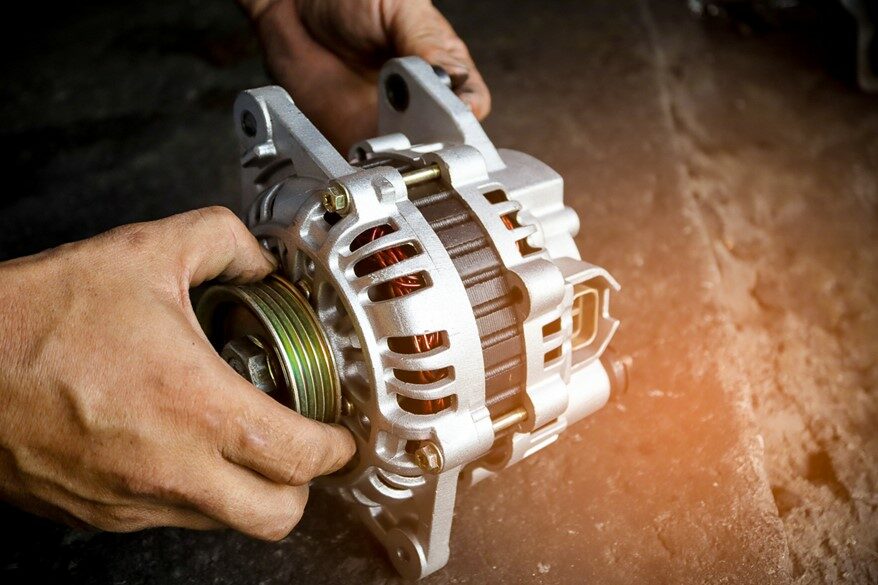A Guide to Alternator Diagnostics
troubleshooting Your Vehicle's Charging System
The alternator plays a crucial role in your vehicle's electrical system by generating electrical power to charge the battery and supply electricity to various systems while the engine is running. Any malfunction in the alternator can lead to a dead battery, electrical system failures, and leave you stranded. In this extensive guide, we will delve deep into the world of alternator diagnostics. By understanding the basics and following a systematic approach to troubleshooting, you can identify and address potential issues before they become major problems. For more in-depth information and resources, be sure to check out TheAutoMonkey.com.
Understanding the Basics of an Alternator
Before we dive into alternator diagnostics, let's begin by understanding the fundamental role of the alternator in your vehicle. Essentially, an alternator converts mechanical energy from the engine into electrical energy. This electrical power not only charges the battery but also runs all the electrical components in your car, such as lights, radio, and power windows.

Common Signs of Alternator Problems
Recognizing the symptoms of a failing alternator is the first step in diagnosing potential issues. Here are some common signs to watch out for:
- Dimming Lights: If your headlights or interior lights dim when you rev the engine or use electrical accessories, it could indicate a problem with the alternator.
- Warning Lights: Keep an eye on your dashboard for warning lights like the battery, charging, or alternator lights. If any of these lights illuminate, it's a clear indicator of trouble.
- Strange Noises: A failing alternator might produce unusual sounds, such as grinding, whining, or squealing. These noises can be a result of a worn-out bearing or a loose belt.
- Dead Battery: If your battery constantly dies, even after a jump start, the alternator may not be charging it properly.
- Electrical Failures: Malfunctions in various electrical systems, like power windows, power locks, or the radio, can be attributed to an inadequate power supply from the alternator.
What to learn more about Common Signs of a Failing Alternator? Check out this blog.
Performing Alternator Diagnostics
Seeking Professional Help
While these diagnostic steps can help you identify potential issues, diagnosing and repairing a faulty alternator can be challenging for the average car owner. If you're unsure about your findings or lack the necessary tools and expertise, it's best to consult a professional mechanic. They can conduct a comprehensive assessment and make the necessary repairs or replacements. To understand when it's time to seek professional assistance, visit [TheAutoMonkey.com's article on when to consult a mechanic for alternator issues](https://www.theautomonkey.com/when-to-replace-an-alternator/).
Maintenance and Prevention
Now that you're familiar with the warning signs, let's explore how to diagnose alternator problems systematically:
- Voltage Test: A multimeter is a valuable tool for testing the alternator's output voltage. With the engine running, connect the multimeter's positive lead to the alternator's positive terminal and the negative lead to the negative terminal. A healthy alternator should produce around 13.8 to 14.4 volts.
- Belt Inspection: A loose or worn serpentine belt can cause alternator issues. Inspect the belt for signs of wear, such as cracks or fraying. Ensure it's properly tensioned.
- Listening for Noises: Pay attention to any strange noises coming from the alternator. Grinding, whining, or squealing noises could indicate internal issues.
- Battery Test: If your alternator is suspect, it's also wise to test the battery. A weak battery can put excessive strain on the alternator. Most auto parts stores offer free battery testing services.
- Visual Inspection: Look for visible signs of damage, such as burnt wires, loose connections, or oil leaks around the alternator.
For a more detailed guide on how to test your alternator.
Prevention is always better than cure. Regular maintenance of your vehicle's alternator can help prevent unexpected breakdowns. Here are some maintenance tips:
- Check the Belt: Periodically inspect the serpentine belt for wear and proper tension. A loose or damaged belt can lead to alternator problems.
- Keep Connections Clean: Ensure that the electrical connections to the alternator are clean and secure. Corrosion can impede the flow of electricity.
- Monitor Battery Health: Regularly test your vehicle's battery to ensure it's in good condition. A healthy battery helps the alternator function optimally.
- Regular Servicing: Include alternator checks as part of your vehicle's regular servicing. Professional mechanics can spot issues before they become severe.
To learn more about maintaining your alternator and preventing problems, consult [TheAutoMonkey.com's guide on alternator maintenance](https://www.theautomonkey.com/how-to-maintain-your-car-alternator/).
Your vehicle's alternator is a critical component that keeps the electrical system running smoothly. By staying vigilant for common signs of alternator problems and performing basic diagnostic tests, you can catch issues early and prevent more significant problems down the road. Remember, regular maintenance and addressing problems promptly can keep your vehicle running smoothly and help you avoid unexpected breakdowns. For additional resources and expert advice on alternator diagnostics and maintenance, visit [TheAutoMonkey.com](https://www.theautomonkey.com/).
In this comprehensive guide, we've covered the basics of alternator function, common signs of problems, diagnostic steps, when to seek professional help, and preventive maintenance. Armed with this knowledge, you can ensure that your vehicle's alternator continues to provide reliable electrical power, keeping you on the road and out of trouble.
